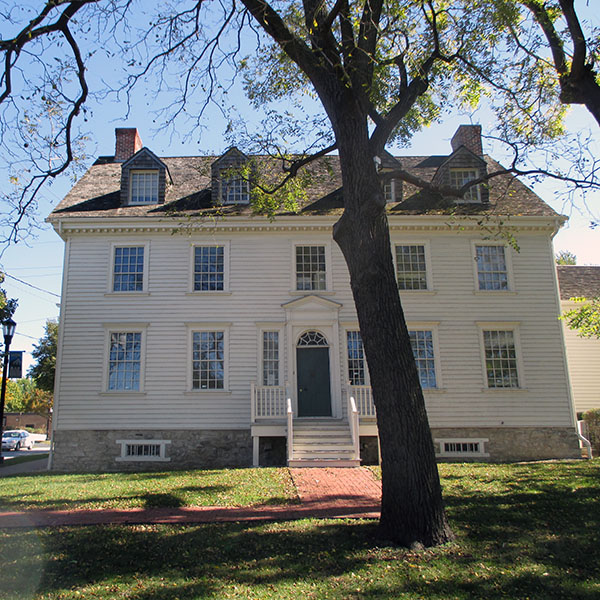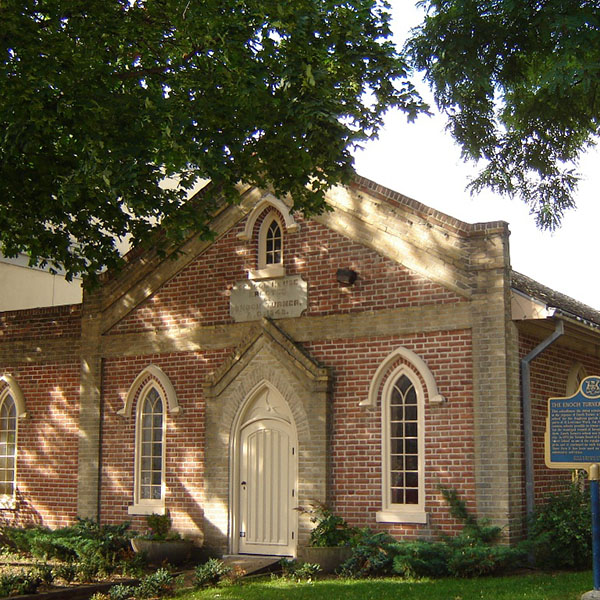Menu
Fulford Place is now closed for the season.
Restoration
The Ontario Heritage Trust undertook an extensive restoration of the site before opening Fulford Place to the public as a museum in 1993. The verandas were completely rebuilt and the interiors conserved. The early-20th-century electrical, plumbing and heating systems were refitted and public amenities added to provide public access to the Beaux-Arts mansion.
The library, with its smaller dimensions and southern exposure, is perhaps the most comfortable room in the mansion. It was George Fulford I’s private study.
The ceiling and walls are walnut. The woodwork showcases a fleur-de-lis on a shield, a motif that appears on the carved mantle and in other areas of the house.
The rooms specifically designed for formal entertaining were the dining room and the drawing room. Both have changed very little and are furnished as they were in the senator’s lifetime.
The dining room evokes a baronial feeling. The Honduras mahogany ceilings and paneled walls reflect the Renaissance Revival style of the library and the main hall. Capable of seating up to 50 guests, the dining room was a showcase for Mary’s crystal, silver serving pieces and various fine china settings.
Mary Fulford’s piano was a central feature in the French Rococo drawing room. It is a satinwood Steinway grand, hand-painted in the “butterfly” pattern. Mary was trained in classical music and entertained guests at many social gatherings.
The plaster architectural details and the Louis XV furnishings are manufactured reproductions.
On the second floor, the master bedroom was recently restored to its original splendour, using historic photos and paint chips to determine the drapery style and wall colour. The project was funded by The Friends of Fulford Place Association, an incorporated volunteer body that assists the Trust in the operation and public interpretation of the site.
An array of colourful and exquisitely detailed stained glass windows are featured throughout Fulford Place. These windows were fabricated using opalescent glass, a popular new material of the era. Coloured jewels (multi-faceted pieces of cut glass) add texture and visual interest.
Much of the mansion’s stained glass has been restored through fundraising activities of The Friends of Fulford Place Association. Among the restored windows are those in the dining room, breakfast nook and powder room.


